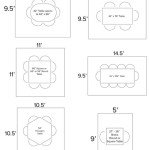Cost To Build a Patio Roof: A Complete Guide
Adding a patio roof can significantly enhance the usability and enjoyment of your outdoor space. It provides protection from the elements, allowing you to relax and entertain guests regardless of the weather. However, understanding the cost involved in building a patio roof is crucial for planning and budgeting your project effectively. The final expense will depend on various factors, including the size and style of the roof, the materials used, labor costs, and any necessary permits.
This article will provide a comprehensive breakdown of the costs associated with building a patio roof, exploring the different elements that contribute to the overall price and offering insights into how to make informed decisions when planning your project. We will also discuss various types of patio roofs and construction options that influence the final cost.
Key Factors Influencing Patio Roof Cost
Several factors play a significant role in determining the cost to build a patio roof. Understanding these factors will allow you to make informed decisions and potentially optimize your budget.
Size and Scope of the Project: The most obvious factor is the size of the patio you intend to cover. A larger patio will naturally require more materials and labor, resulting in a higher overall cost. The complexity of the roof design also influences costs. A simple, rectangular roof will generally be less expensive than a more intricate design with multiple angles or curves. The scope of the project also includes considerations like the height of the roof and whether it will be attached to the house or a freestanding structure.
Materials Used: The choice of materials for framing, roofing, and support structures significantly impacts the cost. Common framing materials include wood and metal. Wood, particularly pressure-treated lumber, is a popular choice for its affordability and ease of use. However, metal framing, such as aluminum or steel, offers greater durability and longevity, albeit at a higher price point. Roofing materials vary widely in price and aesthetics, ranging from inexpensive asphalt shingles to more premium options like metal roofing, tile, or polycarbonate panels. The supporting structure, whether consisting of posts, beams, or attachment to an existing structure, also contributes to the overall material cost.
Labor Costs: Labor is a substantial component of the overall cost, especially if you hire a professional contractor. Labor costs vary depending on location, the complexity of the project, and the contractor's experience and reputation. Obtaining multiple quotes from different contractors is essential to ensure you are receiving a fair price. Beyond the primary construction labor, consider potential additional costs such as electrical work for lighting or ceiling fans, or plumbing for outdoor kitchens, which will require specialized tradespeople.
Permits and Inspections: Building permits are typically required for patio roof construction, and the associated fees can vary significantly depending on your local regulations. It is crucial to obtain the necessary permits to avoid potential fines or legal issues down the line. Additionally, inspections may be required at various stages of the construction process to ensure compliance with building codes. Budgeting for permit fees and inspection costs is an essential part of the overall project planning.
Site Preparation: The condition of your patio area can influence the overall cost. If your patio requires significant leveling, grading, or the removal of existing structures, these preparation tasks will add to the expense. Additionally, if access to the construction site is difficult, this may increase labor costs.
Types of Patio Roofs and Their Associated Costs
The type of patio roof you choose will significantly impact the overall cost due to varying material and labor requirements. Understanding the different types available will help you make an informed decision based on your budget and aesthetic preferences.
Attached Patio Covers: These roofs are directly attached to your house, typically using a ledger board secured to the exterior wall. Attached patio roofs are a popular option because they provide a seamless transition from indoor to outdoor spaces and often require less structural support than freestanding structures. Attached patio roofs are often more cost-effective than freestanding structures because they utilize the house's existing structure for support.
Freestanding Patio Covers: These roofs are independent structures supported by posts and beams and are not attached to the house. Freestanding patio covers can be placed anywhere in your yard and offer greater design flexibility. However, they require a more robust support system, which can increase the overall cost.
Solid Patio Roofs: Constructed using solid roofing materials like asphalt shingles, metal roofing, or wood, solid patio roofs offer complete protection from the elements. While these roofs provide maximum shade and rain protection, they can be more expensive than other options due to the cost of materials and labor.
Lattice Patio Covers: Lattice covers consist of interwoven strips of wood or metal, providing partial shade while allowing some sunlight to filter through. Lattice structures are typically less expensive than solid roofs, but they offer less protection from rain and sun. The cost will depend on the type of wood, or metal if used, and the size of the area to be covered.
Pergola Patio Covers: Pergolas feature open frameworks of beams and rafters, creating a visually appealing outdoor space. While pergolas provide some shade, they offer less protection from the elements than solid roofs. Pergolas can be constructed from wood, vinyl, or metal, with the cost varying accordingly.
Retractable Patio Covers: These covers offer the flexibility of opening or closing the roof as needed, providing shade or allowing for sunlight exposure. Retractable covers can be made from fabric, vinyl, or polycarbonate and can be manually operated or motorized. Retractable systems are generally more expensive than fixed roofs due to the added complexity of the operating mechanism.
Breaking Down the Cost: Materials and Labor
To better understand the cost breakdown, it is helpful to examine the individual material and labor expenses involved in building a patio roof.
Framing Materials: The cost of framing materials depends on the type of wood or metal used and the size of the structure. Pressure-treated lumber is a common choice for its affordability and resistance to rot and insects. However, metal framing, such as aluminum or steel, offers greater durability and longevity. Expect to spend between $3 and $7 per linear foot for lumber or $5 to $15 per linear foot for metal framing.
Roofing Materials: Roofing materials vary widely in price, with asphalt shingles being one of the most affordable options. Metal roofing, tile, and polycarbonate panels are more expensive but offer greater durability and aesthetic appeal. Asphalt shingles typically cost between $1 and $4 per square foot, while metal roofing can range from $5 to $15 per square foot. Tile roofing is generally the most expensive option, with prices ranging from $10 to $30 per square foot.
Support Posts and Beams: The cost of support posts and beams depends on the material used and the size of the structure. Wood posts and beams are a popular choice for their affordability and aesthetic appeal. Steel or aluminum posts and beams offer greater strength and durability but are generally more expensive. Expect to spend between $50 and $200 per post, depending on the material and size.
Fasteners and Hardware: Fasteners and hardware, such as screws, nails, bolts, and brackets, are essential for assembling the patio roof structure. The cost of these materials is typically a relatively small percentage of the overall project cost, but it is still important to factor them in. Expect to spend between $50 and $200 on fasteners and hardware, depending on the size and complexity of the project.
Labor Costs: Labor costs can vary significantly depending on your location, the complexity of the project, and the contractor's experience and reputation. A general rule of thumb is to budget between 30% and 50% of the total project cost for labor. For a simple patio roof, labor costs may range from $5 to $15 per square foot. More complex projects may require specialized skills and higher labor rates. Obtaining multiple quotes from different contractors is essential to ensure you are receiving a fair price.
Permit and Inspection Fees: Permit and inspection fees vary depending on your local regulations. Contact your local building department to obtain information on the specific fees required for your project. Permit fees can range from a few hundred dollars to several thousand dollars, depending on the size and complexity of the project.
Additional Costs: Besides the core materials and labor costs, consider potential additional expenses, such as electrical work for lighting or ceiling fans, plumbing for outdoor kitchens, or landscaping to enhance the area around the patio roof. These additional costs can significantly impact the overall project budget.
By carefully considering these factors and breaking down the costs involved, you can develop a realistic budget for your patio roof project and make informed decisions to ensure a successful outcome.

How Much Does It Cost To Build A Roof Over My Deck 2024 Data

How Much Does It Cost To Build A Covered Patio

How Much Does It Cost To Build A Roof Over My Deck Or Patio In Colorado

How Much Does It Cost To Build A Covered Patio

How Much Does It Cost To Build A Roof Over My Deck 2024 Data

How Much Does Adding A Roof Over Patio Cost 2024

How Much Does It Cost To Build A Patio In Houston

How Much Does It Cost To Build A Roof Over My Deck Or Patio In Colorado

Fixr Com Covered Patio Cost To Build
How Much Does It Cost To Build A Roof Over Deck Quora








